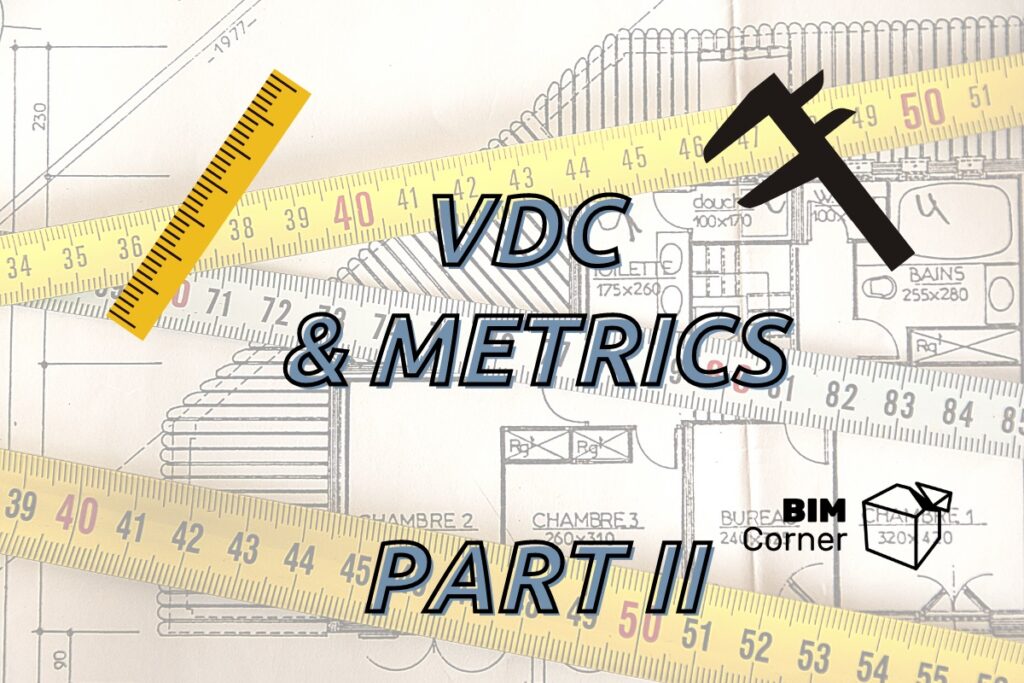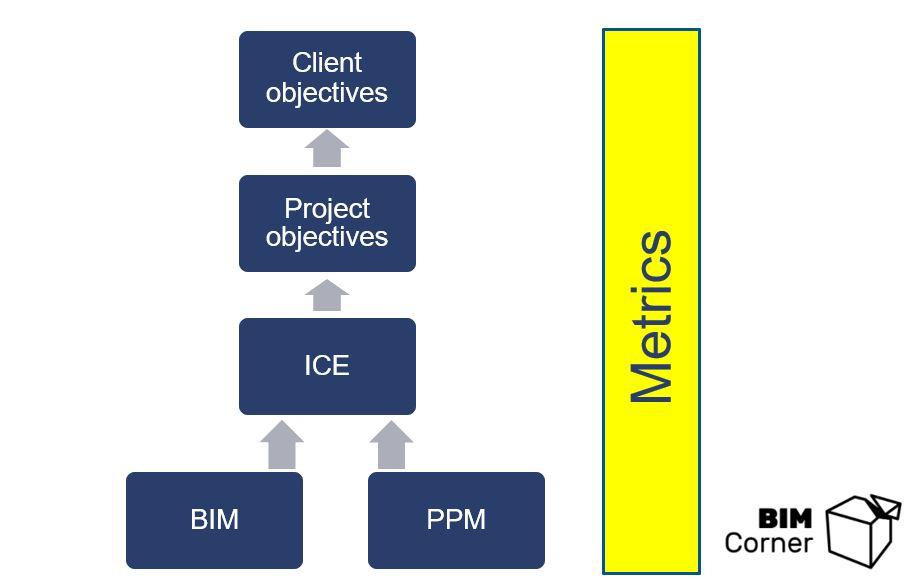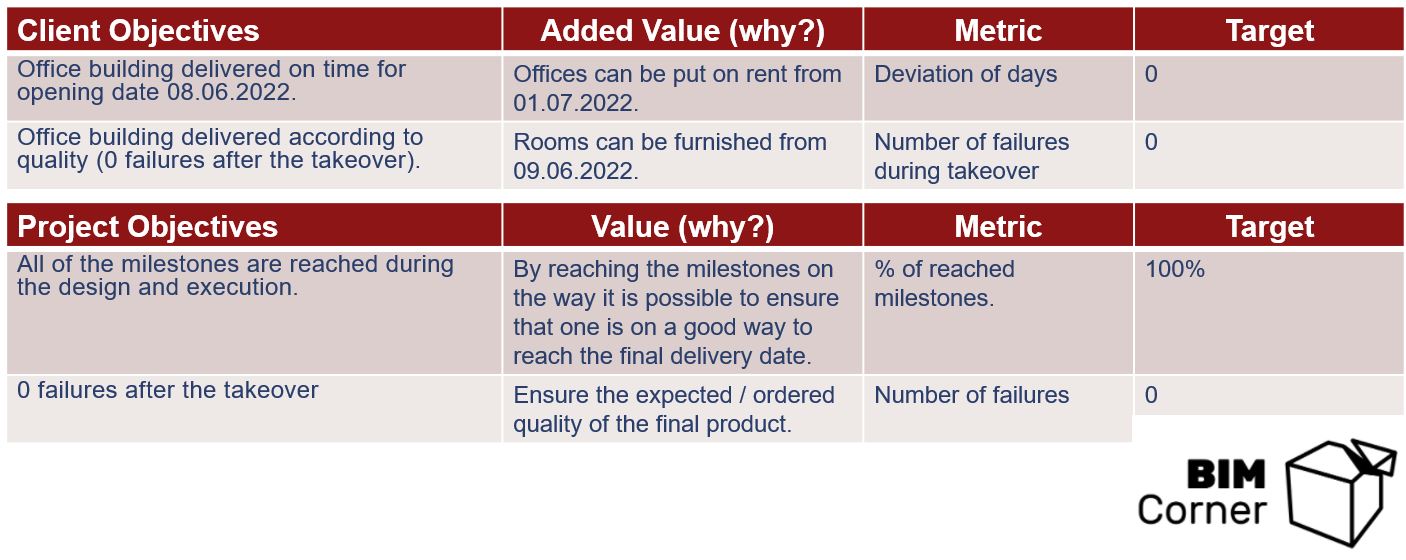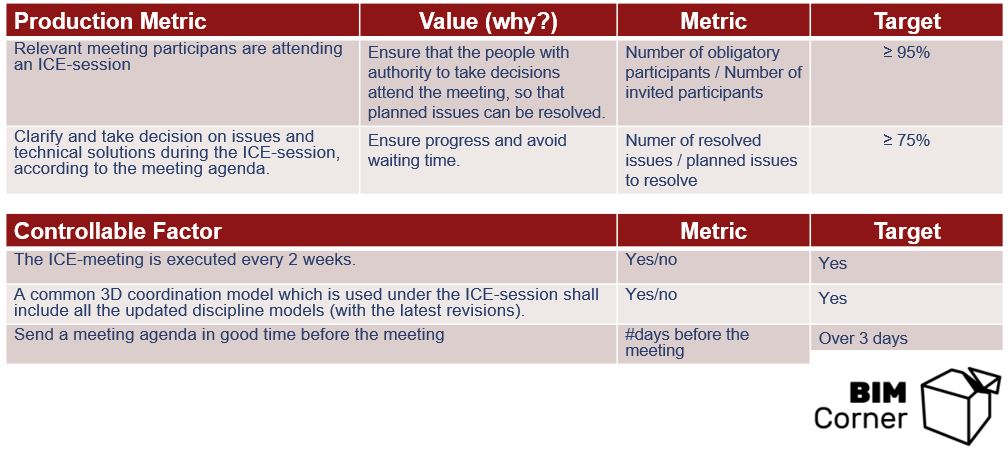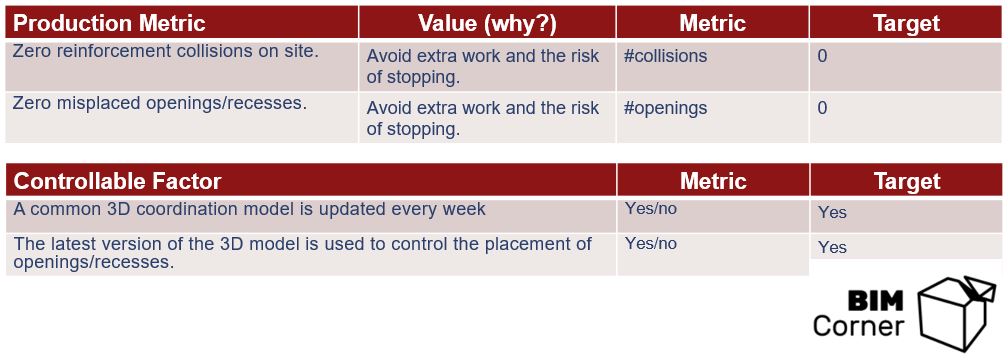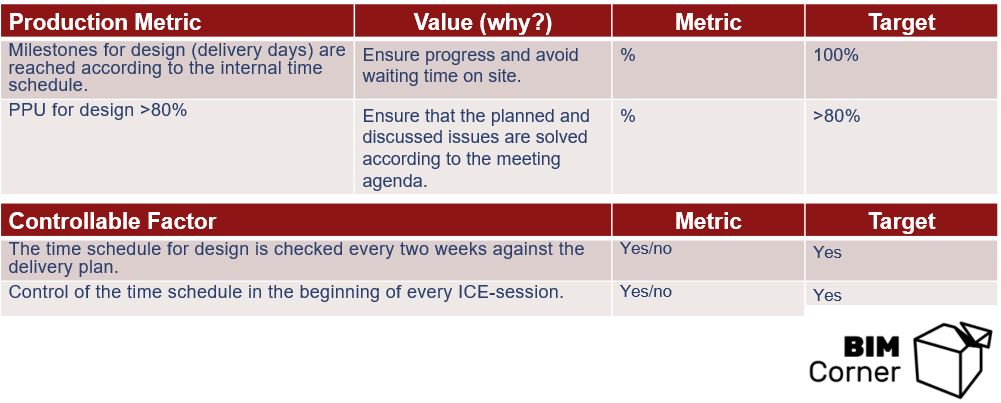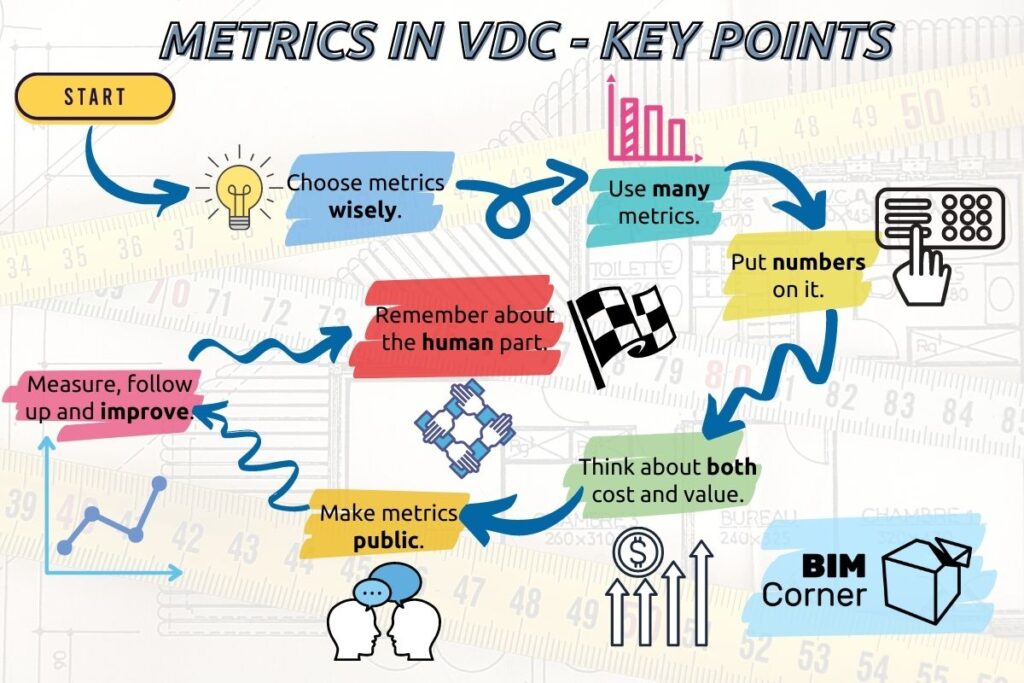Do you know WHY are you working on the project, be it an office building, hospital, or bridge? In order to understand this, we need to answer another question: why is the client doing the project? Naturally, followed by: what does the project team need to achieve? Then, connect relevant metrics to production and decide on a controllable factors. This is the Virtual Design Construction in a nutshell – and today we invite you to read the practical examples of metrics in the project!
What gets measured, gets improved.
Peter Drucker
In the first part Metrics in VDC, or how do you improve performance?, we covered mostly theory, including benefits of introducing and use of metrics and their different types. The theory was important to understand the idea of metrics in VDC and in this article, which you are reading now, we will see how does it work in some practical examples.
This post is a continuation of the series EVERYTHING ABOUT VDC. The first article from the series about the metrics is available here: Metrics in VDC, or how do you measure performance?
Table of content
In the first article about the series we started with the following points:
In this article we will cover those topics:
4. Practical examples.
Let’s start where we finished last time and have a look at the following table, showing interconnection of metrics, from the production to the client goals:
And have a short look – as a reminder – at the whole VDC concept and where does the metrics stand in it:
4.1. Examples of the Client Objective and Project Objective.
In this point, based on the previous example of an office building (see the first article), we will present some practical client and project objectives, together with connected metrics. Please remember, that these are just examples – one can put many more metrics.
We will start with defining the client and project objectives, followed by production metrics for three elements of VDC: ICE-sessions, use of BIM and PPM-system.
4.2. ICE - examples of the Production Metrics and Controllable Factors.
4.3. BIM - examples of the Production Metrics and Controllable Factors.
4.4. PPM - examples of the Production Metrics and Controllable Factors.
5. Key points about metrics.
5.1. Choose metrics wisely.
It can be said in different ways: ‘One thing worse than not having metrics is having wrong metrics’, or ‘A misused metric is worse than no metric at all’. It is why it is so crucial to select, agree on and establish the correct metric system. In other words, use metrics on things that matter, not just for the sake of having them. Remember that it is better to concentrate on several key issues that have a significant effect on the project and in a result it will be easier to follow them more closely.
5.2. Use many metrics.
Use of many metrics will give you a more comprehensive picture of the status of how the project is going in relation to the goals. The key is to find the correct number and type of things that you want to measure. It will vary according to the project. By having more than just one metric, you can see how different issues are interconnected and understand the bigger picture.
5.3. Put numbers on it.
Discussing aims, ideas or planning, it is easy to have an opinion. Everybody can say and agree on, for example, the following sentences:
- ‘We need to be more productive.’
- ‘We need to have good quality.’
- ‘The meetings must be effective’.
But what does it actually mean? For everybody it will mean something different. In this way, the results will vary and understanding of a given task as well. But an interesting thing happens when you put numbers to it, like for example:
- ‘60% of the structures will be prefabricated off-site.’
- ‘We will make a decision on 80% of the planned agenda during the meeting.’
- ‘There will be 0 collisions of reinforcement on site because of 3D modelling.’
What do you think about it? Do you agree? Should it be 40%? Or 90% When you put the numbers to metrics, you can have real discussions and, in the end, agree on a goal together with other project members. Set quantitative targets on performance that you want to achieve!
5.4. Think about both cost and value.
It is tempting to have in mind only goals connected just with $$$, like ‘lower cost’, ‘more money spared’ or ‘better price’. However, you should think about both cost and value with other metrics. Some of the examples of metrics above include quality (number of clashes between reinforcement on the construction site, or actual rework versus anticipated), sustainability (amount of CO2 generated per m2 per year), safety (no accidents on the construction site), productivity (amount of work that adds no value and is waste), time (finish the project X months ahead of time). Include more types of metrics to have a better overview of the actual status of the project.
5.5. Make metrics public.
You can have really good metrics, but if you just hold them and their results for yourself, or only for the leaders or closest collaborators, it will be almost impossible to achieve the goals. Make the metrics public and communicate them to the project team. This can be done by a weekly/monthly project report and having them in a ‘physical form’ (print-outs, summaries, charts) posted on walls or dashboards. A side-effect that you will achieve is more engagement from all project participants and understanding of following the same goals – which are the project’s and the client’s objectives.
5.6. Measure, follow up and improve.
As mentioned before, use of the VDC implies continuous improvement during the whole project life cycle. According to research ‘Measuring and explaining management practices across firms and countries’ from Nick Bloom, regularly and formally paying attention to performance metrics improves management practices, which again correlates with improved company performance. Please take note of the importance of the regularity of follow-up and formality of doing so – the path of improvement is not always an easy one, but will definitely pay off!
5.7. The human part.
With the current technology, in theory we can measure everything. How many decisions were made, how many hours did we use to put 1000 kg of reinforcement, how many people participated in the meeting, and so on. However, please do not forget the human part of the system and before taking any actions or making a judgement, look at the reasons of the results. Because in the end behind everything are we – the people, not machines. And metrics cannot show everything – like for example, bad weather conditions, so that it was impossible to install the assumed amount of reinforcement. Or a period with a lot of stressful work in three consecutive weeks, which resulted in low participation in meetings and low number of decisions made in the following days. In the end, metrics give you some indication and it is your responsibility to understand them correctly and if needed, take a necessary action.
6. Metrics. Here and now.
BIM Corner is a place where practitioners share their experience, right? How about making a practical experiment here and now? Let’s say that for this article I have decided on the following, three simple metrics (with just two questions!):
-
>4 / 5 is the score for how useful the readers found this article..
-
>75% answer the open question ‘what would you like to learn about the VDC in construction’?.
-
>50 number of answers sent to this questionnaire..
Please fill in this short questionnaire and let us see how the metrics work in practice! I will share the results with you either in the continuation of the series or by updating this article. Thank you for your input!:-)
7. Summary of metrics in VDC.
Through measurement and control, project teams can manage projects to achieve client and project goals. But teams will also need to change.
Reflections from Integrating Project Delivery book
Metrics is one of the most important principles of VDC. Without metrics, it is almost impossible to measure improvement, see what is working and what is not, and take action when necessary. Unless we measure we do not have a basis for improvement. Traditionally, in the best case, we learned about the results of a project when it was already finished. And in that time we could do nothing about it. The metrics allow us to set a goal, see the result in a given time period and have a possibility to act right away. Thanks to that we can take actions already during the design or execution phase and make sure that we are on the right way to achieve our objectives.
This article is based on the Integrating Project Delivery book and VDC-Certificate Program in Norway, arranged by the Norwegian University of Technology NTNU together with Stanford Center for Professional Development, as well on the writer’s own experience.
We have also some questions to YOU! Do you have any experiences with using the VDC methodology? How do you think could metrics affect your current work, projects and the whole organization? Or maybe you do use the metrics already? Share with us your experience below the article!
This post is a continuation of the series EVERYTHING ABOUT VDC. The first article from the series about the metrics is available here: Metrics in VDC, or how do you measure performance?

